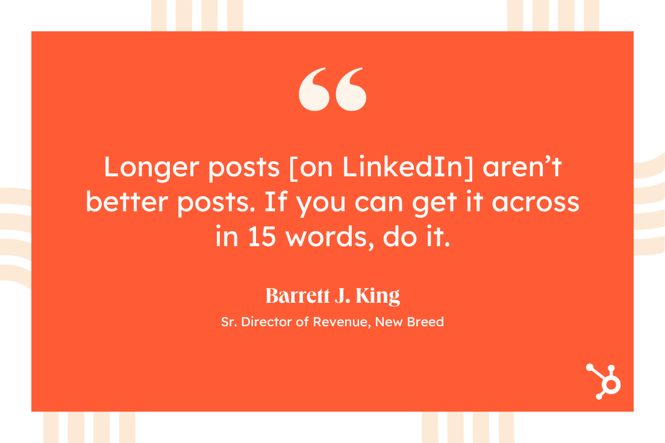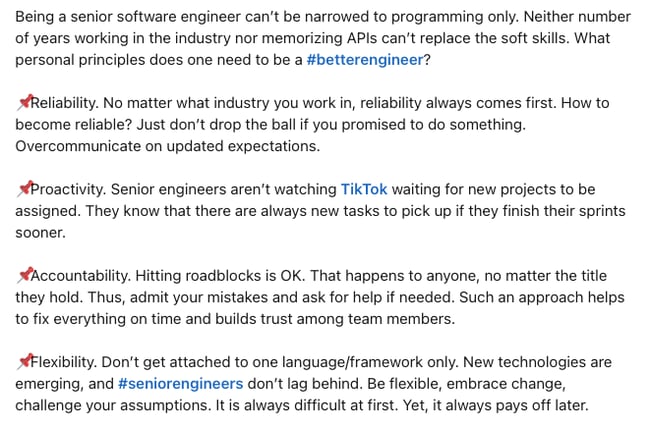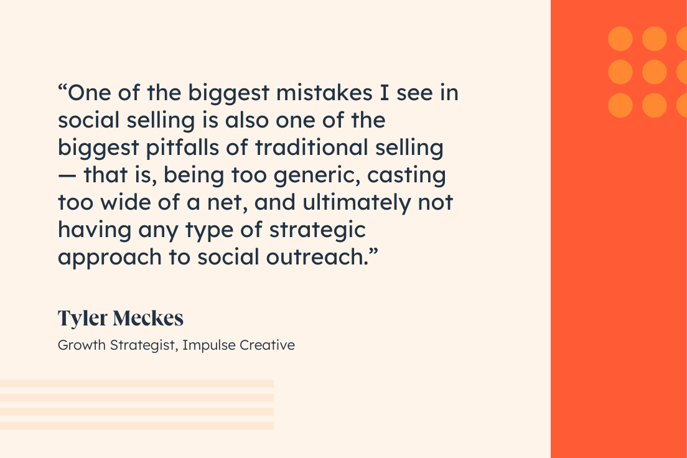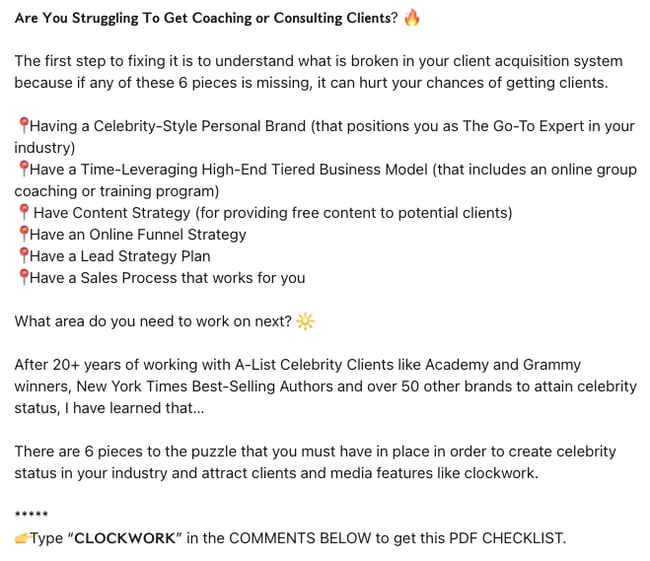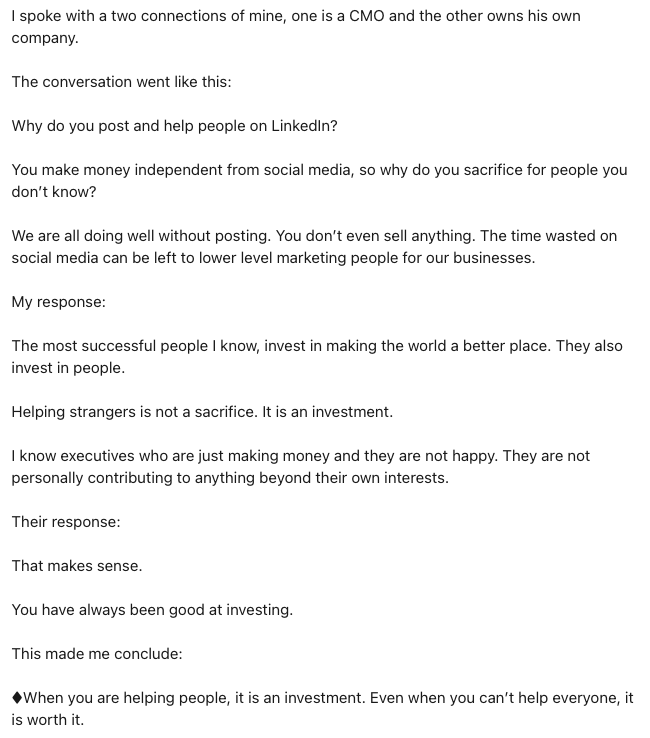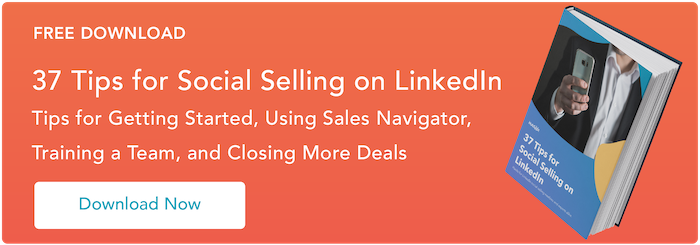Your organization needs an effective sales hiring strategy to survive. The average annual turnover for sales teams is around 27%, meaning that if you have 10 reps, you could lose three of them within the year.
The only way to maintain — and, ideally, to increase — sales performance is to hire often and well.
In this guide, you’ll learn the ins and outs of a successful sales hiring process.
1. Build a hiring profile.
Different salespeople are successful in different environments. Just like you target specific prospects who are the best fit for your product, you should identify the type of reps who have the ideal skills, experience, and background for your company — and pursue them aggressively.
To figure out what your optimal salesperson looks like, study the top-performing ones on your team. Which traits do they have in common? Which industries do they come from? What are their trademark selling styles? What motivates them?
When Mark Roberge, former SVP of Worldwide Sales and Services at HubSpot, began scaling our sales team, he prioritized five traits of the most successful salespeople.
- Coachable: Can absorb and apply feedback
- Curious: Interested in learning more about prospects; willing to ask probing questions
- Intelligent: Able to master a subject
- Hard-working: Put in the time and energy
- Previously successful: Has a track record of success, whether in sales or sports, school, another job, etc.
If you have a few (or several) different selling functions, do this exercise for each role. For example, your ideal Business Development Rep (BDR) profile will look different than your ideal Account Executive (AE) profile. The former should probably have 0-2 years of sales experience, while the latter will have 3-5 years.
You should also identify salary for this role. This is a function of your budget, market rate, the role and how much revenue it should produce, and the non-monetary aspects you can offer.
For example, if your competitors are offering salespeople $160,000 OTE (on-target earnings), you may want to offer a comparable (or higher) salary to attract the top salespeople. If you’re willing to take a risk on less proven candidates (maybe someone who has the right personality but little or zero selling experience), you can justifiably provide a lower salary.
The larger your annual contract value (ACV) and yearly quota, the higher annual compensation should be. For example, if your ACV is $50,000, and you expect reps to close $700,000 in new business per year, their OTE should be around $126,000 — assuming compensation is split 50/50 between base and commission. (Learn more about how much you should pay your salespeople.)
You may want to consider including salary information in your job description. Not only will it filter out the candidates who want more than you can reasonably pay, but it can also increase your percentage of applications by 30%. Salespeople are also traditionally motivated by money, so you’ll be playing to your audience.
2. Develop questions and techniques.
Once you’ve built a comprehensive profile of your ideal salesperson, come up with interview strategies to measure each trait in your candidates.
Let’s say that, like Roberge, you want to hire highly coachable salespeople. Roberge factored this into his interviewing process with a role play. He would run through a standard role play with the prospective hire, ask them to assess their performance, give them some recommendations, and then do the role play again. Accurately diagnosing their performance, as well as incorporating Roberge’s feedback, was a strong sign they were highly coachable.
Roleplaying is always a handy technique, but it’s not the only one available. You can also use:
- Interview questions: Prompts like “Tell me about a time when …” or “How would you handle X situation?” help you get a read on a candidate.
- References: Ask for specific examples of how the candidate exhibited a particular trait, like resourcefulness.
- Resume: Look for objective markers of success, like a promotion or membership on a sports team.
3. Write a job description.
Now it’s time to translate your ideal hiring profile into a job description. Take the time to craft an engaging, well-written job description that accurately describes the role and sells your company.
Remember, your job descriptions influence both the quantity and quality of your applicants. So, let's cover some common mistakes you may be making while writing yours.
You're cobbling together pieces of job descriptions from other companies.
You might save time copying and pasting snippets from other job descriptions, but the finished product will be generic and boring. You can look at your competitors’ job descriptions to see how they’re describing similar roles, their company culture, and benefits, but always write the actual description yourself.
You're writing out a wishlist of desired skills and experiences that ends up being unrealistic.
Are you describing your dream candidate? You’ll probably scare applicants off; after all, the “perfect’ salesperson probably isn’t out there (and if they are, they’ll likely want more money than you’re willing to pay).
Sort your requirements into several buckets: Required, preferred, and bonus. Label them as such in your job description. This will ensure people who meet 60% or more of your requirements will apply — which is exactly the percentage you’re shooting for.
You're using vague terms and jargon (such as “motivated”, “strong business acumen”, “self-starter,” etc.).
These adjectives are so overused they’re essentially meaningless. Be as specific as possible; for example, if your sales team is driven by friendly competition, say you’re looking for salespeople who “love to win.” It’s simple, straightforward, and, most importantly, honest.
You're neglecting to make the role sound desirable.
Don’t forget — you’re trying to win over in-demand salespeople. Make sure to include several reasons why this role is a great opportunity. That might be your company culture, perks, the chance to get in on the ground floor of a hot company, an established career path, a competitive salary, access to coaching and training, or some combination of the above.
You're being misleading.
Never misrepresent the job. Maybe entry-level sales hires usually spend their first year calling prospects and booking appointments for closing reps. If you don’t mention that in the job description, you’ll end up with interviewees who aren’t interested in the position you’re hiring for — or worse, new employees who will quickly quit when they realize the reality of their job.
The best way to prevent this? Provide a brief summary of a typical day. Giving candidates a preview of their daily routine will help them decide if it’s a good fit.
Here’s a breakdown of a strong job description:

- It lists the salary.
- It begins with a compelling description of the company and the role.
- It describes what the first months and overall responsibilities will be like without using jargon.
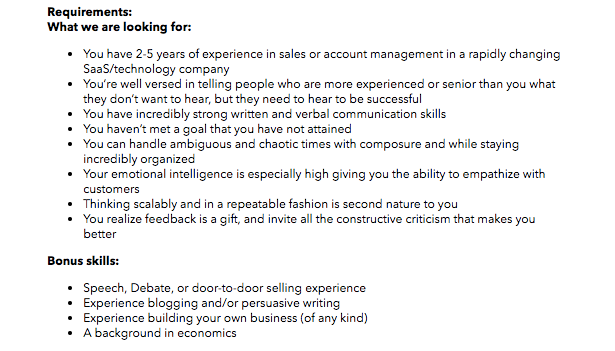
- It targets a specific personality.
- It separates requirements into “what we’re looking for” and “Bonus skills.”
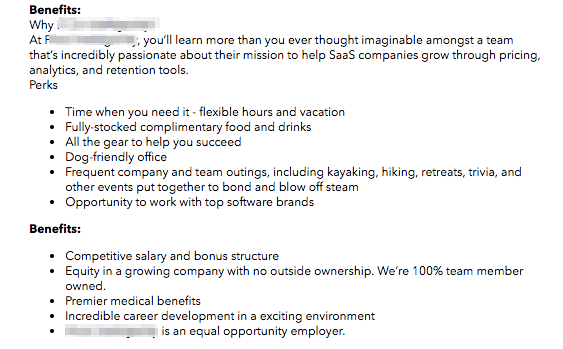
- It highlights both traditional benefits (“competitive salary,” “equity”) and more unique/culture benefits (“dog-friendly,” “flexible hours and vacation.”)
4. Build your pipeline.
Planning on writing up a quick job description, posting it on 10 job boards, and waiting for the applications to roll in? Although you might hit your quantity objective, the quality will probably be disappointing. Quality sales hiring starts with intentionally building your pipeline.
There are many different channels for recruiting salespeople. I recommend trying several to see which ones are most effective.
Traditional Job Boards
Monster.com, Indeed, and Glassdoor are some of the most well-known job boards.
Pros: They’re easy and quick to use.
Cons: Most candidates probably won’t be qualified (Staff.com chief of Staff Rob Rawson estimates most employers receive “dozens or hundreds of applicants with 95-100% not qualified or adequately skilled”.)
Niche Job Boards
Use these to target your specific industry and/or sales function. For example, candidates browsing AngelList are looking for startup jobs, while those on MedReps.com want to work in pharmaceutical sales.
Pros: You have less competition. A much greater percentage of applicants will be potential fits.
Cons: There might not be an ideal job board for your niche. Plus, you might not receive enough applicants to justify the price of a job listing.
Look for users that fit your ideal profile, then reach out to see if they’re interested in a career change.
Pros: The best salespeople often aren’t actively looking for a new job. You can pre-qualify people to ensure they’re good fits. This option is also free (unless you want to pay for $1,200 per year for LinkedIn Recruiter Lite, which gives you 30 InMails per month, advanced search options, and suggested candidates based on your searches).
Cons: This method is time-consuming and hard to scale. Since you’re reaching out to passive candidates, it usually means a longer time-to-hire — first, you have to convince them to apply, then you have to actually interview them.
Social Media
Ask your sales managers and/or salespeople to share the job description on their social media accounts. (Consider offering a referral bonus as an incentive.)
Pros: This is a lightweight way to get referral candidates, who are hired more frequently and in less time than applicants through other channels. Almost half of the referrals stay at their jobs for three-plus years, compared to 14% of employees hired from job boards.
Cons: You may not get enough volume to satisfy your needs.
Referrals
Along similar lines, tap your network for potential good fits. Send an email to your professional connections asking if they know anyone who fits X criteria and would be interested in Y job.
Pros: Again, referrals are highly desirable hires. You know they’re trustworthy, qualified, and hardworking.
Cons: If no one in your network knows the right person for the job, you won’t have any candidates. It’s also probably not wise to tap everyone you know every time you have an open req, so this method needs to be used selectively.
Sales Managers
Encourage them to consistently take high-performing salespeople at other companies out for coffee — not to pressure them to leave their jobs, but to give them feedback and advice. When the time comes that they’re ready to make a move, your company will be on their shortlist.
Pros: You can attract top candidates by giving them specialized attention.
Cons: Your sales managers are already busy — this adds another non-revenue generating activity to their plate. Additionally, it might take six months to two years of coffee meetings for a salesperson to be ready to switch (assuming they make the leap at all, which is far from guaranteed). And if you try to woo multiple salespeople from a single employer, you may get a reputation for poaching.
Recruiters
Hire a staffing agency to find and vet candidates for you.
Pros: If you need to hire salespeople ASAP, an agency could be the solution. You don’t have to do any of the heavy lifting.
Cons: This option will cost you — firms will usually request 20-30% of the new hire’s first-year salary. Plus, recruiters aren’t company employees, so they don’t truly know what your culture is like.
5. Screen applicants.
The pre-interview screen can save you a great deal of time later in the interview process. You can do a phone or virtual screening interview, which will last around 10 minutes, or a written screen, i.e. an assignment that lets you gauge the candidate’s skills.
Each form has unique benefits. Phone/virtual screens give you the chance to see whether potential hires are good at building rapport, thinking on their feet, and speaking effectively — all critical abilities in sales.
However, written screens test candidates’ written communication skills (also important in sales), as well as their commitment to being hired.
Peter Kazanjy, cofounder of TalentBin (acquired by Monster Worldwide), explains, “(The written screen) puts the time cost on the candidate and gives you a better sense of their abilities.”
He recommends sending them around 12 “lighthearted and pithy” open-ended questions, such as:
- Document for me a deal (either sales or recruiting) that went terribly. Be totally honest.
- What do you think about Google Glass?
“Written screens allow me to take an off-ramp as soon as it's clear someone isn't making the cut,” Kazanjy also notes. “Contrast this to the standard approach of setting up a 15-30 minute phone call that requires aligning calendars. Plus, it's much more difficult to end a call early when it’s clear it’s a bad fit than to stop reading a written response.”
6. Have applicants do a mock demo.
At some point in the interview process, determine how well the candidate can present. Having excellent presentation skills is less important for junior salespeople, as you can teach these. But it’s a red flag if an experienced salesperson can’t effectively run a demo. And in both cases, you can judge how much effort the rep put into preparing.
That’s why a mock presentation or demo should take place in between the screen and on-site interview. (You can also incorporate into the on-site interview, but keep in mind your candidate may get tired or overwhelmed if you’re also scheduling several face-to-face meetings with different members of your team.)
Give your hire a product to sell that your organization would feasibly buy (or has bought already). You’re a prospect who has agreed to a demo. They should treat this like they would in a real sales role — from sending a calendar invitation and setting up a Zoom, Google Hangouts, or WebEx meeting to closing.
Here’s what to look for:
- An invite sent in advance with all the details you need (time, date, brief agenda, meeting link)
- Confirmation and/or reminder email before the meeting
- An agenda at the top of the call
- Clear knowledge of you and your business
- Periodic questions to make sure you’re following along
- Probing questions
- Check-in questions to see if you’re confused or need additional information
- Attempts to surface objections
- Good objection-handling skills
- Confidence
- Personalized content for your company and use case
- A strong close
- A follow-up email sent the same day as the demo (or early the next day) with a proposal
While it’s rare for one candidate to check every single box, a promising hire will meet most of them.
7. Interview applicants.
Humans are inherently biased and emotional — meaning their ability to predict a person’s fit during an interview isn’t great. Research shows the validity of a typical unstructured interview is approximately 20%. In other words, only one in five interviews actually help employers identify candidates that will be successful.
To improve your odds, standardize your interviews. Use a scorecard and uniform set of questions during every interview. If more than one person on your team is interviewing candidates, they should all use the same scorecards and individual set of questions as well. This removes subjectivity and bias from the process; plus, it’s easier to compare your impressions with your coworkers.
For example, maybe your sales enablement manager is interviewing candidates to help you identify people who will use marketing collateral and take advantage of your company’s resources. She should ask every single candidate some variation on the same 10 questions, which will allow her to develop a baseline and spot great responses.
Your scorecard should reflect the hallmarks of your best reps. Let’s say one of the traits you’re looking for is a desire to learn. Each interviewer should rate the candidate’s desire to learn on a scale of 10, allowing you to develop an average score.
(Of course, you don’t need to use a 1-10 scale — figure out a grading convention that works for you and your team.)
The scorecard should also have a section for an overall recommendation: Strong Yes, Yes, No, Strong No.
Sales Interview Questions
If you’re interviewing for an entry-level sales position, prompts like “Tell me about a time when …” and “Describe your usual process for X” aren’t very helpful because chances are the candidate has little to none traditional sales experience.
Instead, opt for hypothetical questions. Here are a few examples:
- “What would you do if …?”
- “Imagine you’re in X situation. How do you react?”
However, if you’re interviewing a candidate who’s held a selling role in the past, you should ask a mixture of hypothetical and real questions.
To give you an idea, you might ask, “Describe a time your prospect went dark. What did you do?” , followed by, “If you got on a call with a prospect and there were three people on the line whom you weren’t expecting and had never met before, what would you do?”
This gives you a chance to gauge both their experience and innate abilities.
Your questions should cover the following:
- Selling skills (qualifying, asking questions, objection-handling, presenting, negotiating, etc.)
- Behavior and personality
- Motivation
And if you have specific requirements — like technical knowledge, familiarity with a certain industry or product type, relationships with a given set of people — make sure to dig into these during the interview as well.
Be prepared to answer questions about your company, the role, and your product as well. Good salespeople will want to know:
- What your sales process is like
- How territories are allocated
- How you approach training
- What the ramp-up period is like
- Which tools your team uses
- Which challenges new and veteran salespeople face
- What distinguishes your top performers from your average ones
- If there’s a clear promotion path
- Which metrics they’ll be measured on
- What a typical day in the office is like
- Which personality types are most successful
- How salary and commissions work
Make sure everyone on your interview team knows the answers to these (and that you’re all saying the same things).
8. Make an offer.
After you’ve progressed several candidates to the final stage, hold a roundtable discussion with every member of the interview process.
Because the only thing more time-consuming and expensive than hiring someone is firing them and finding a replacement, your team should take this decision very seriously. Listen to everyone’s opinions, encourage them to express their reservations, and default to “no”.
Most employers extend the offer over the phone first. If the candidate verbally accepts, they send a formal offer letter. This saves you from spending time writing the offer only to have the candidate say they don’t want the job.
If the candidate wants a few days to consider your offer, give them the time. You should also let them know you’re happy to answer any of their questions.
Once you send the letter, they may attempt to negotiate salary or other terms. It’s up to you whether you negotiate or not — most sales organizations pay the same base/variable salary to all the salespeople in that role. It’s then up to the reps to over-perform if they want to make more money.
Of course, the ability to negotiate is a key part of a salesperson’s job … so it may be a positive sign when a candidate comes back with several requests.
Are you in the enviable position of having more salespeople you want to hire than open positions? Don’t reject them and forget they ever existed. A few months down the line, you’ll probably be hiring again.
When you give them the news, make it clear you were impressed with their application and would love to have them on your team. Request to stay in touch with future opportunities. Every three months or so, shoot them an email asking them how they’re doing — and when you do have an open slot, ask them personally to apply.
9. Measure and tweak.
Keep track of every aspect of your hiring process. Double down on what’s working, and experiment with the less successful components.
What does that look like in practice? Let’s say you implemented a formal hiring process eight months ago. Most of the highest-performing reps from the first cohort came from a recruiting firm. With that in mind, you should decrease your investment in other channels and ramp up your budget with the agency.
You also notice that it takes roughly one week longer to hire salespeople when you have an intro screening call before the first in-person interview, but the interview-to-offer ratio is three times higher. In other words, adding seven days is probably worth it because you end up filtering out lots of poor fits that will otherwise suck up interviewing time.
Master Your Sales Hiring Process
Master the sales hiring process, and you'll have a competitive advantage. Follow these tips to get top candidates that stick around and help your business grow.
Editor's note: This post was originally published in September 2017 and has been updated for comprehensiveness.

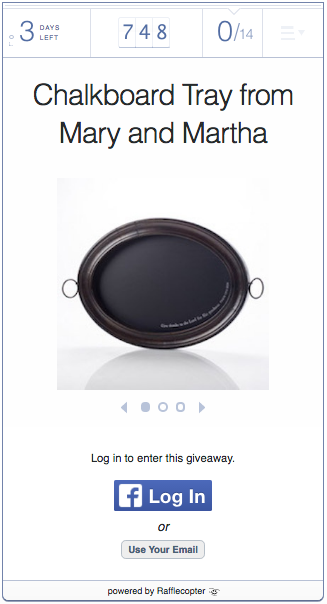 Remember when running giveaways on your blog to let subscribers know what they can expect to receive from you when they enter their email address.
Remember when running giveaways on your blog to let subscribers know what they can expect to receive from you when they enter their email address.
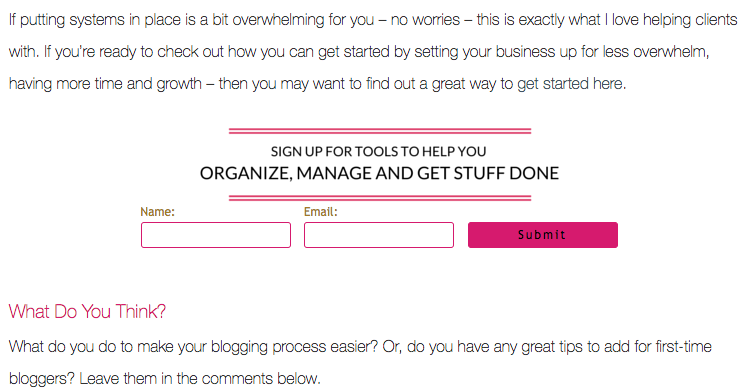
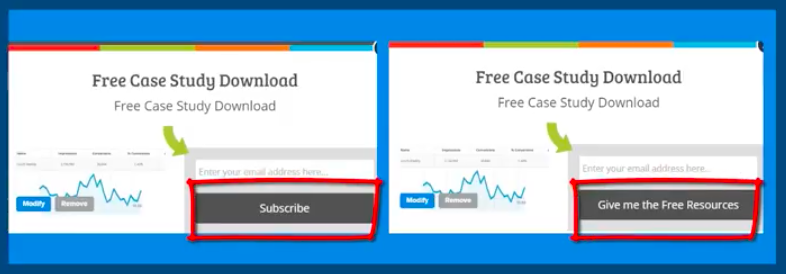 To conduct your A/B split tests, you can use an email opt-in plugin like
To conduct your A/B split tests, you can use an email opt-in plugin like  You can turn any ordinary widget into a fixed or sticky widget with the
You can turn any ordinary widget into a fixed or sticky widget with the 













 Perhaps the most defeated feeling a sales pro experiences is the feeling that you’ve done everything you can to provide value to a prospect, and you still end up in the “send me an email and if we are interested we’ll reach back out” zone. It’s gut wrenching. The conversation flows smoothly, the prospect is clearly interested, but they simply won’t agree to any concrete next steps. We may never understand why these prospects eventually turn into ghosts, but instead of letting it sap your initiative and morale, try putting yourself in their shoes for a moment.
Perhaps the most defeated feeling a sales pro experiences is the feeling that you’ve done everything you can to provide value to a prospect, and you still end up in the “send me an email and if we are interested we’ll reach back out” zone. It’s gut wrenching. The conversation flows smoothly, the prospect is clearly interested, but they simply won’t agree to any concrete next steps. We may never understand why these prospects eventually turn into ghosts, but instead of letting it sap your initiative and morale, try putting yourself in their shoes for a moment. This revamped approach to staying persistent is largely credited to one of the most influential books I have ever read and strongly recommend to everyone in any profession:
This revamped approach to staying persistent is largely credited to one of the most influential books I have ever read and strongly recommend to everyone in any profession: 

 Figure 1. Different selling processes that govern B2B sales
Figure 1. Different selling processes that govern B2B sales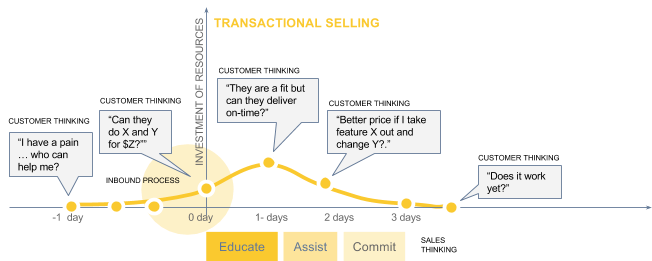 Figure 2. Transactional Selling in which clients do most of the education on their own
Figure 2. Transactional Selling in which clients do most of the education on their own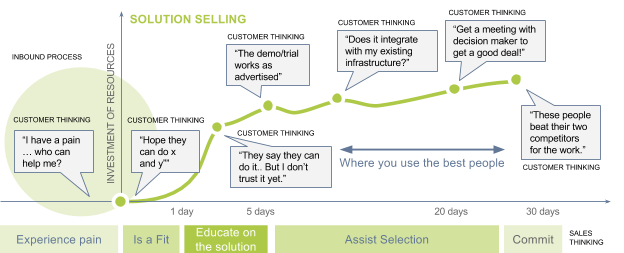

 Figure 5. Provocative Selling Only recommended to deploy on specific accounts
Figure 5. Provocative Selling Only recommended to deploy on specific accounts












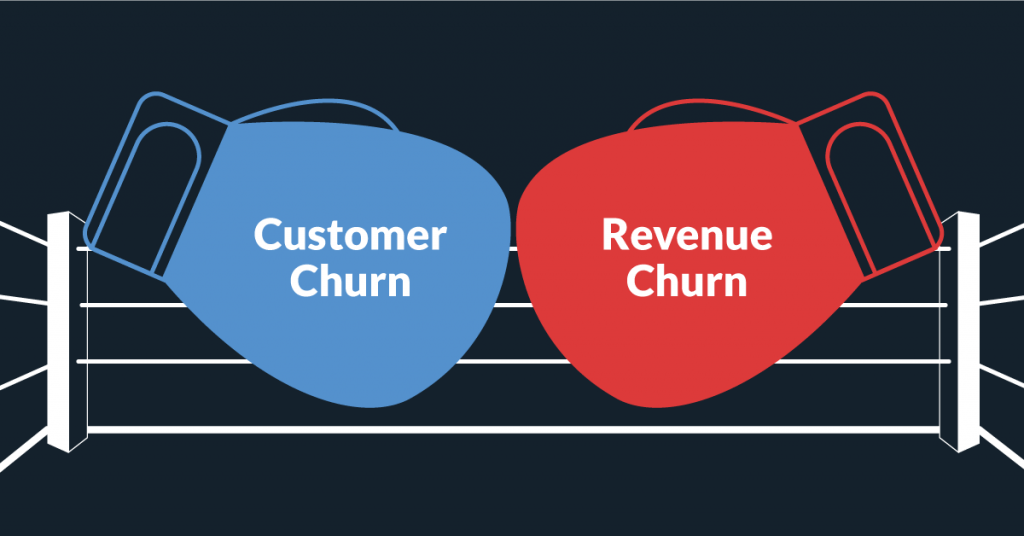


 Our hyper-connected digital world is defined by an overabundance of data. Everything’s measurable, trackable, and quantifiable. Want to know how many people
Our hyper-connected digital world is defined by an overabundance of data. Everything’s measurable, trackable, and quantifiable. Want to know how many people 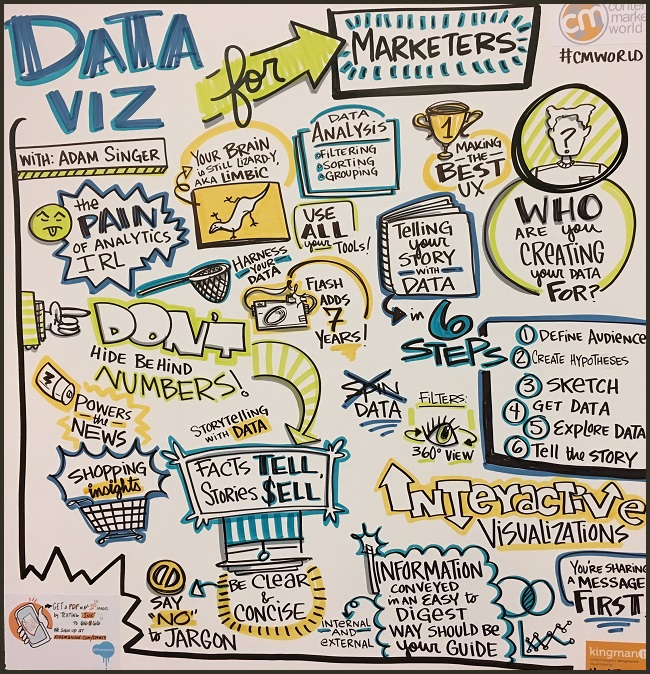 My favorite part is the lizard that represents your limbic brain. Visuals cut straight to that reflexive part of your brain, making a point quicker than listing facts and drawing conclusions.
Here’s how Adam suggests creating data-based visuals that speak directly to our inner lizards.
My favorite part is the lizard that represents your limbic brain. Visuals cut straight to that reflexive part of your brain, making a point quicker than listing facts and drawing conclusions.
Here’s how Adam suggests creating data-based visuals that speak directly to our inner lizards.
 Notice how your eyes flick back and forth between the legend and the chart, trying to make sense of it all. Compare that chart to this one:
Notice how your eyes flick back and forth between the legend and the chart, trying to make sense of it all. Compare that chart to this one:
 There’s a mountain of data behind that visualization, but you can instantly grasp the point: vaccines eliminate diseases.
Such a stunning visual doesn’t happen by accident. It takes careful planning. Adam recommends “storyboarding” your visualizations before you even pull the data in. Nail down who you’re talking to, what questions you’re answering, and the story you’re telling before you create a single chart.
There’s a mountain of data behind that visualization, but you can instantly grasp the point: vaccines eliminate diseases.
Such a stunning visual doesn’t happen by accident. It takes careful planning. Adam recommends “storyboarding” your visualizations before you even pull the data in. Nail down who you’re talking to, what questions you’re answering, and the story you’re telling before you create a single chart.



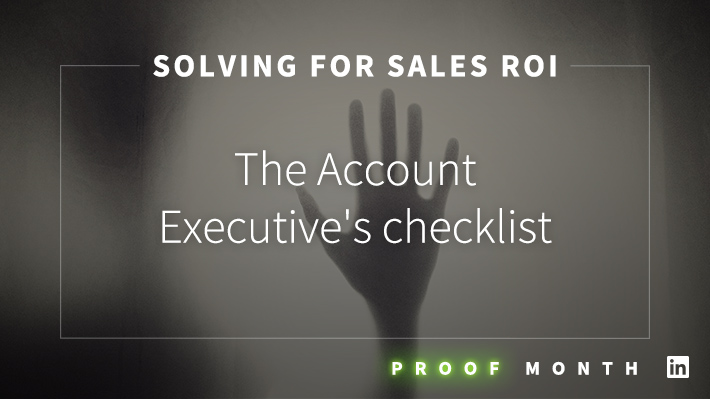



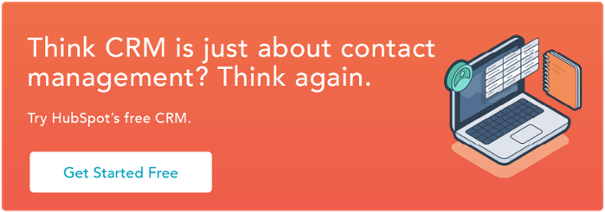


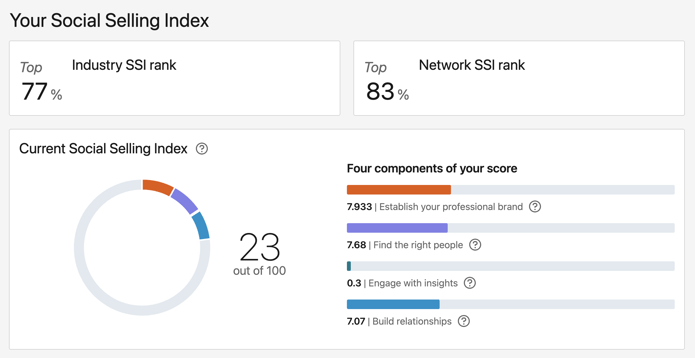
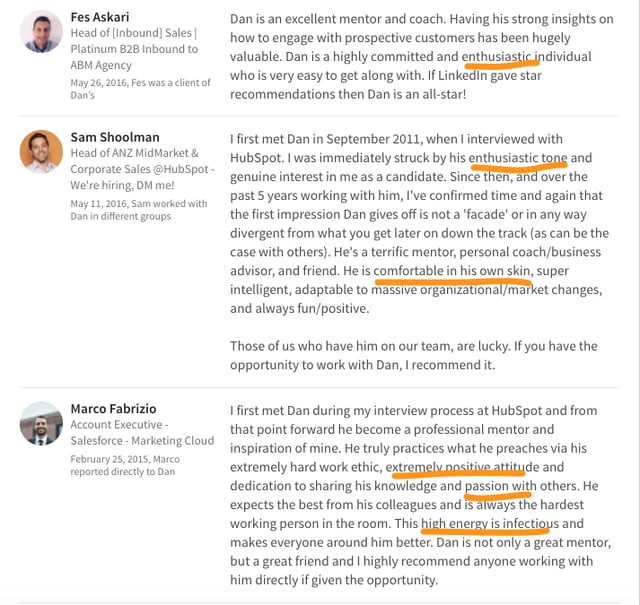

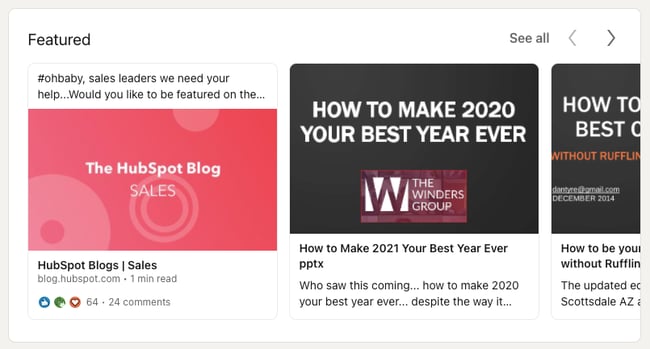
 Interests
Interests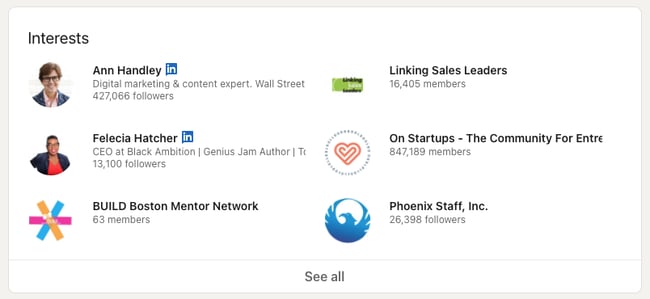
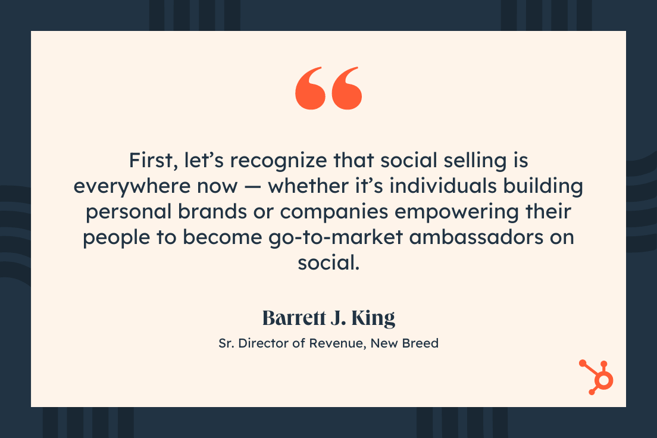


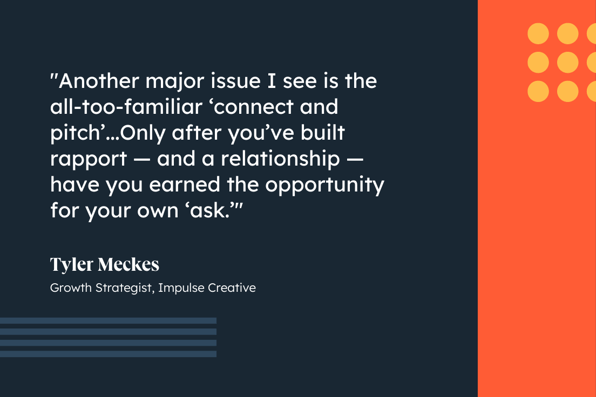
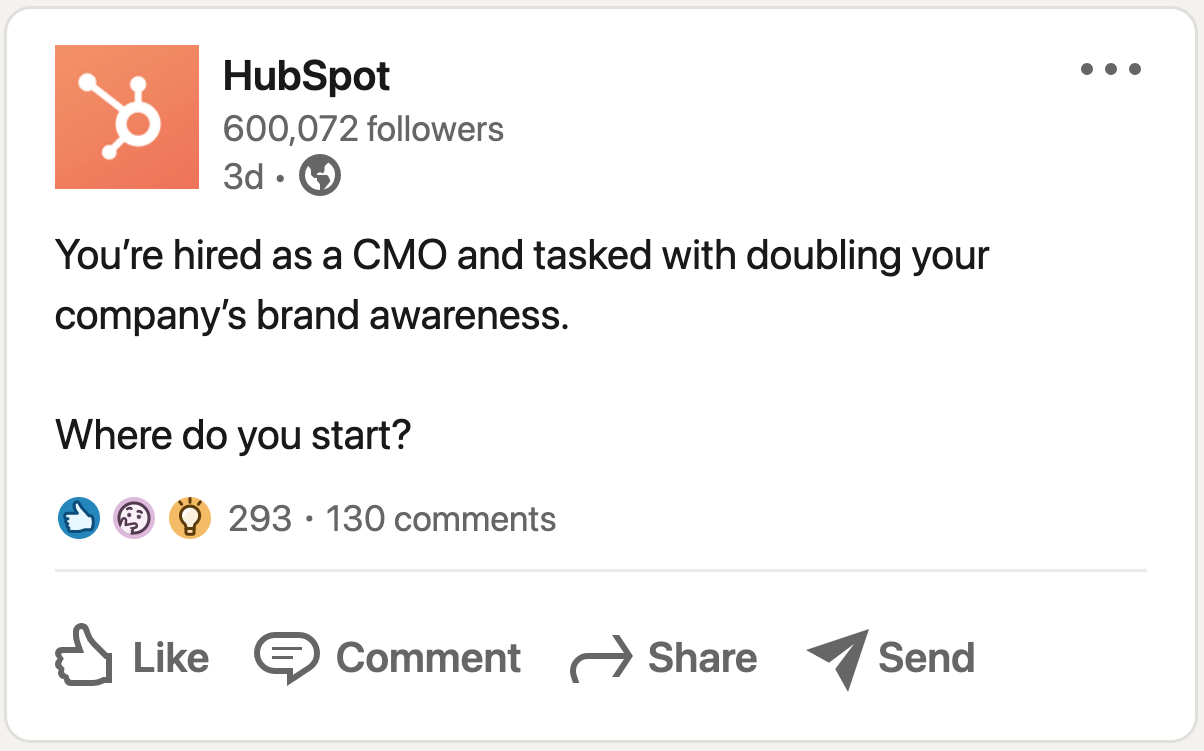
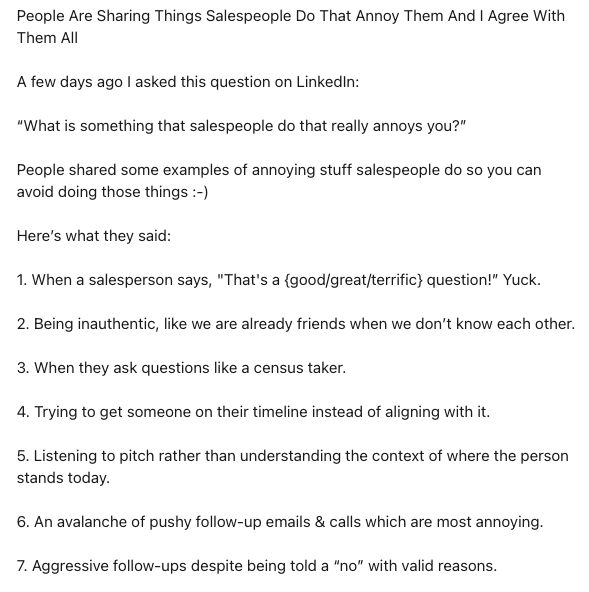 Yes, listicles still work. The best part? They’re fairly easy to write, and they can touch upon topics your prospect will likely relate to.
Yes, listicles still work. The best part? They’re fairly easy to write, and they can touch upon topics your prospect will likely relate to.